Table of Contents
ToggleThe best Paris sites in 7 days or less.
Paris is a city of lights with beautiful architecture, excellent museums, and rich history. It is one of the most visited cities in the world.
Home to the best-known landmarks: the Eiffel Tower, the Louvre Museum, the Notre Dame church, the Arc de Triomphe, and the Champs-Elysee.
To get around Paris quickly, you should understand how the city is divided into “arrondissements” and the Metro system.
Arrondissements: Paris is divided into 20 administrative districts, known as arrondissements. Each arrondissement is identified by its number based on its location within the city, with the 1st arrondissement located in the center and the 20th arrondissement located in the east.
The arrondissements are arranged in a spiral pattern, with the Seine River forming a natural boundary between the right and left banks of the city. The odd-numbered arrondissements are located on the right bank, while the even-numbered ones are on the left bank.
Many visitors navigate the city using the arrondissements numbering. The central arrondissement has the main tourist attractions.
Metro:
Paris has an extensive metro (subway) system that covers the whole city. I recommend using the metro to get around.
The Métro is the cheapest, easiest, and fastest way around Paris. There are 16 metro lines and 300 metro stations; the entrance is indicated by a large yellow letter, ‘M.’
Metros start running daily– including public holidays – at around 6 a.m. and stop at about 12.45 a.m. (from Sunday to Thursday) or 1.45 a.m. (on Friday and Saturday). The frequency at which metros run depends on the time and day: metros run every 2 minutes at peak hours.
Where to buy a metro ticket: Metro tickets cost € 1.90 each (€18.60 for 10 [ask for ‘un carnet’]). You can buy tickets at automatic ticket machines in metro stations, in tabagies (cigarettes and magazine shops).
Each line has a distinctive color and number shown on signs and maps.
Best time to visit Paris:
Peak tourist season, June to August, when the weather is warm and sunny, is exceptionally crowded. This is when the city is bustling, and prices are high. The best times to visit are Fall or Spring.
Most of the sites are within walking distance of each other. Visiting Paris by bike is a quick and cheap way to get around the capital. , it is also a great way of exploring Paris outdoors and making the most of the weather when it is good. Click here to book a bike “BikesBooking.com”
I have visited Paris regularly for business and pleasure; there is always something new to discover. Whenever you get the opportunity, try to get lost in the back streets away from the tourist center, and you will be rewarded.
Below is a plan for a seven-day leisurely visit to Paris with details for each site. I also listed the sites you should visit if you stay for 1, 2, 3, or 4 days.
There is enough free time in the itinerary to allow for time to sit outside a cafe and do people-watching. You will notice that many cafes place their chairs facing the street.
You can find cuisines from all over the world in Paris. Check Google ratings to find your favorite.
While in Paris, I recommend taking a Wine Tasting Tour. Click here for a reservation for a “Wine Tasting Tour.”
If you require storage for luggage while waiting for a room or flight, Check “RadicalStorage.”
A river cruise is recommended; you can see most sites as you cruise along. There is a hop-on, hop-off cruise. Click here for information.
One-Day visit:
(all within walking distance)
-
Champs Elysee
-
Arc de Triomphe
-
Eiffel Tower
-
Place de la Concorde
-
Louvre museum
-
Notre Dame
Two Days visit:
Add the following to the one-day visit:
-
Sacre Coeur church and montmartre.
-
Opera Garnier
-
Alexandre bridge
-
Pont Neuf
-
Latin Quartier
-
Luxemburg Gardens
You could use the metro to reach Sacre Coeur at Montmartre if you don’t feel like walking a long distance. The rest are within walking distance.
Three Days visits:
Two days plus the following:
-
Grand Palais
-
Petit Palais
-
Musee D’Orsay
-
Pantheon
Four Days visits:
Three days plus the following:
-
Champs de Mars
-
Place Versaille (requires public transportation)
-
Galeries Lafayette
-
Printemps
-
Grevin museum.
Seven Days visit:
Day 1
The Champs-Élysées
The Champs-Élysées is a truly lovely avenue: a picture postcard scene. Nearly 2 kilometers in length, this historic boulevard runs from Place de la Concorde to the Arc de Triomphe. It has become the world’s most beautiful boulevard.
There is something for everyone in the Champ_Elysees, from High-end designer stores to beautiful cafes and restaurants.
The Arc de Triomphe
From The arc you can look down the Champs-Elysees, It was ordered to be built by Napoleon I in 1806 to honor the victories of his armies. It carries the names of battles and generals from the revolution and the first Empire. Every evening the flame is lit on the tomb of the unknown soldier.
You can purchase tickets to go to the top of the arc. Click here for information.
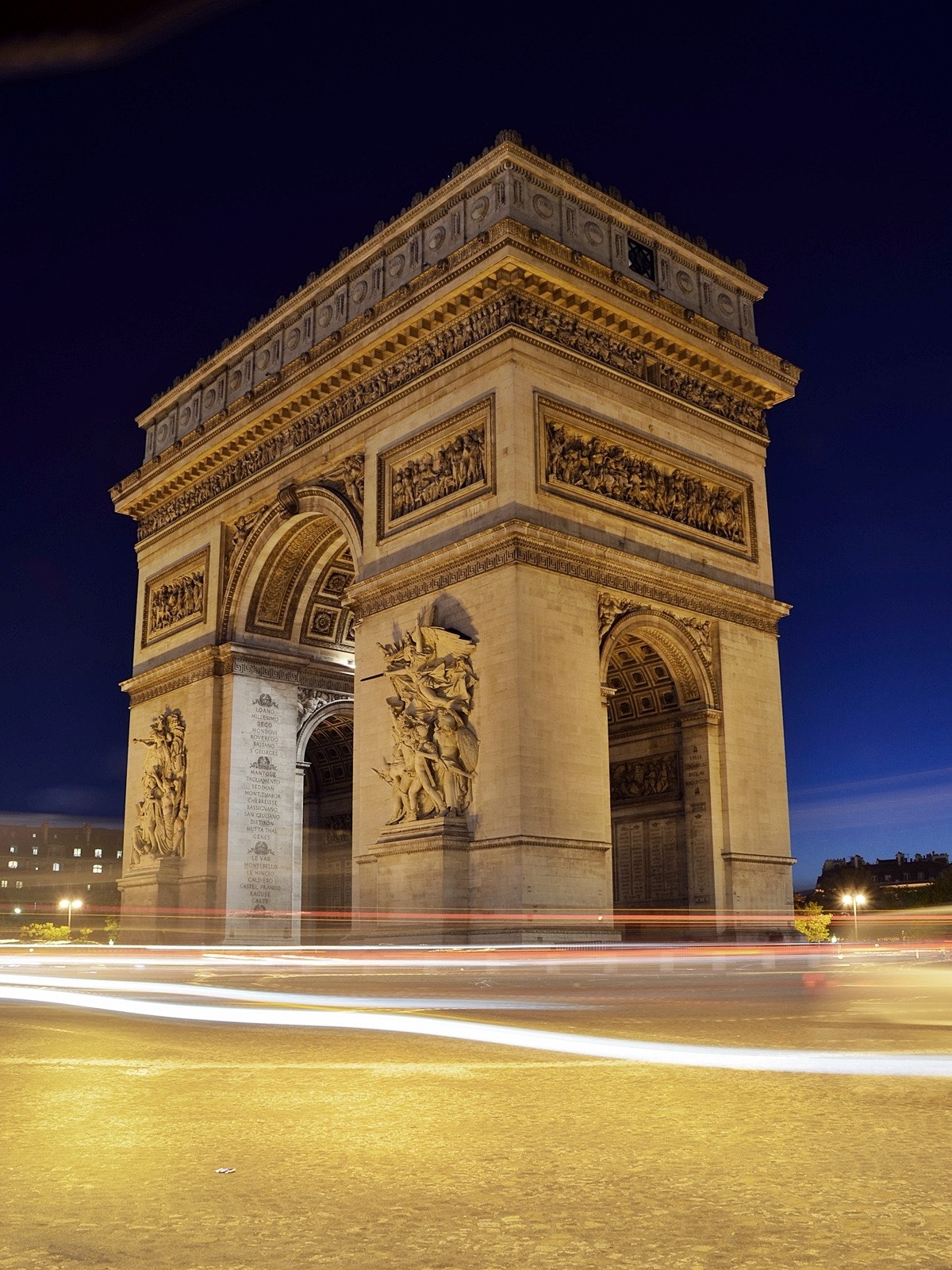
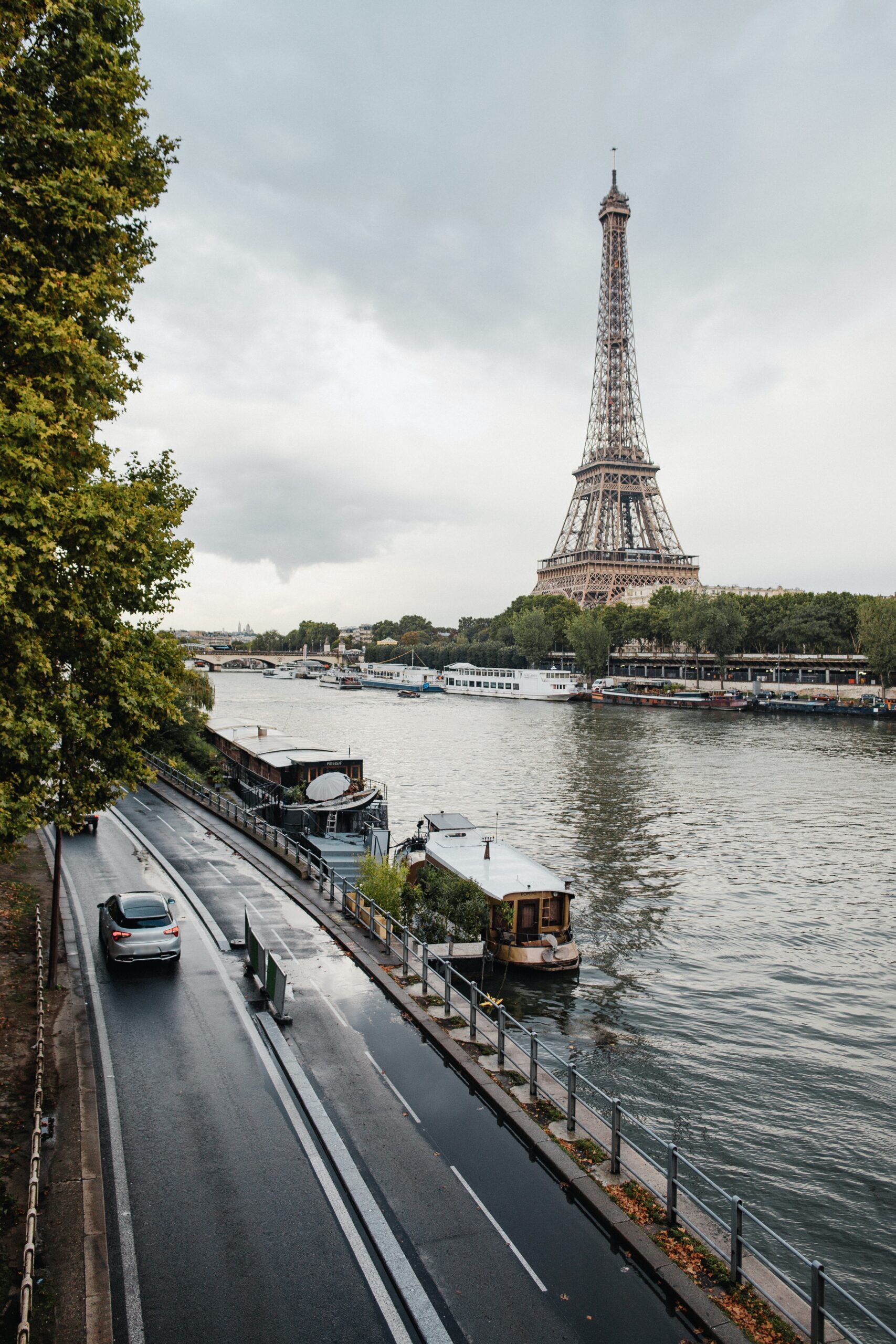
The Eiffel Tower
It took over 2 years to build at the end of the 19th century the engineer Gustave Eiffel. It was designed to live for 20 years. It became a huge success, becoming the French symbol worldwide. It is visited by 7 million visitors a year.
You can buy tickets to the top by clicking here.
Champ de Mars
A large public park situated at the foot of the Eiffel Tower. The area is about 24.5 hectares (60 acres). It was created in the 18th century and was originally used for military training exercises.
Today, Champ de Mars is a popular destination for locals and tourists alike. It offers spectacular views of the Eiffel Tower and is a great place for a picnic, a walk, or a game of soccer or frisbee.
One of the most iconic events to take place at Champ de Mars is the annual Bastille Day military parade. On July 14th, French military forces march down the Champs-Élysées and end their parade at the Champ de Mars, where they perform various military displays and flyovers.
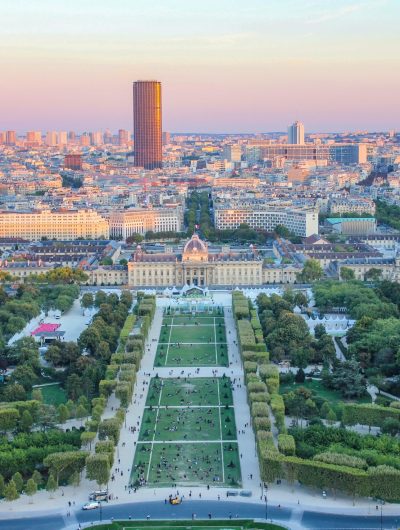
The Musée de l’Armée, or the Army Museum
The museum houses French military collections from the Middle Ages to today. It is located the Hôtel National des Invalides. It displays arms, armor, and military equipment as well as art items that represent the history of French military campaigns. It houses the tomb of Napoleon Bonaparte.
DAY 2
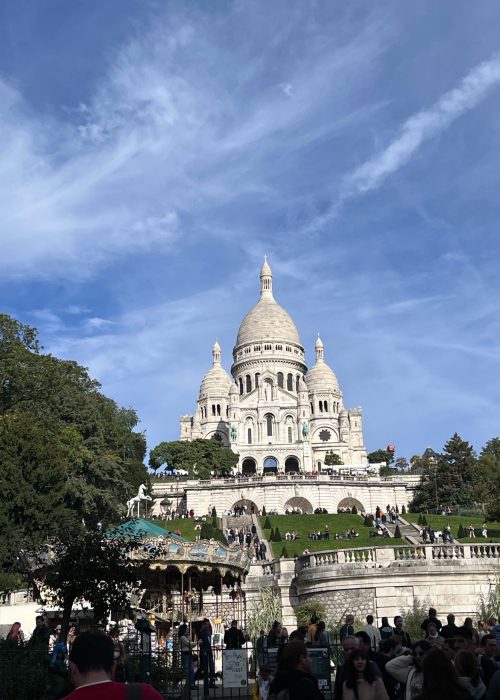
The Sacré-Cœur Basilica, also known as the Basilica of the Sacred Heart
A famous landmark church overlooking Paris is located in the Montmartre district. The basilica was constructed in the late 19th and early 20th centuries as a symbol of national reconciliation after the Franco-Prussian War.
The interior of the basilica is decorated with beautiful mosaics and stained glass windows, and the dome offers stunning panoramic views of the city.
The basilica is a popular tourist attraction and a place of pilgrimage for many Catholics. Visitors can climb the 234 steps to the top of the dome for a spectacular view of the city, or simply explore the beautiful interior of the basilica.
The surrounding neighborhood of Montmartre is also a popular destination for tourists, known for its bohemian atmosphere, street artists, and beautiful views of the city. Visitors can explore the narrow streets and staircases of Montmartre, visit the nearby Moulin Rouge cabaret, or enjoy a meal or a drink at one of the many cafes and restaurants in the area.
There are tours available to Montmartre and the basilica. Click here for information.
The Musée Rodin
A museum dedicated to the works of the French sculptor Auguste Rodin. The museum is located in the Hôtel Biron, a beautiful 18th-century mansion in the 7th arrondissement of Paris that was once Rodin’s residence and studio.
The museum houses one of the largest collections of Rodin’s works, including sculptures, drawings, and photographs. Some of the artist’s most famous works on display at the museum include “The Thinker”, “The Kiss”, and “The Gates of Hell”. The collection also includes works by Rodin’s mistress, Camille Claudel.
Visitors can take guided tours of the museum, participate in educational workshops, or simply wander the galleries at their leisure. The Musée Rodin is a must-see destination for anyone interested in sculpture and the work of one of France’s most celebrated artists.
You can purchase entrance tickets to the museum by clicking here.
The Opéra Garnier, also known as the Palais Garnier
A famous opera house located in the 9th arrondissement of Paris. The building was constructed in the late 19th century during the reign of Napoleon III and is named after its architect, Charles Garnier.
The Opéra Garnier is known for its grandiose architecture and lavish interior, which includes a grand staircase, ornate balconies, and a massive chandelier that weighs over six tons. The auditorium is decorated in red and gold and features a ceiling painted by Marc Chagall that depicts scenes from various operas.
For tickets to enter the Opera click here.
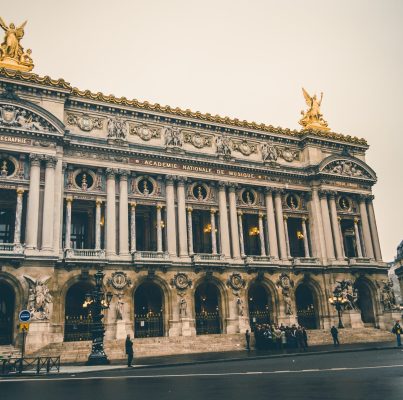
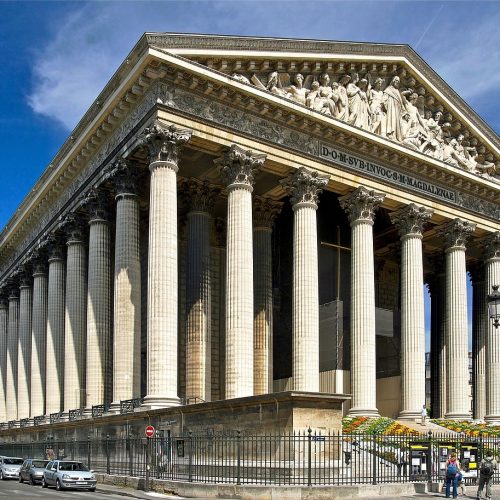
The Madeleine Church, also known as L’église de la Madeleine
A historic Roman Catholic church located in the 8th arrondissement. The church was originally built as a temple to the glory of Napoleon’s army, but it was later consecrated as a church dedicated to Mary Magdalene.
The church is beautifully decorated with frescoes, sculptures, and mosaics. It is also home to the world’s greatest organ.
The Musée de l’Orangerie
A museum located in the Tuileries Gardens in Paris, France. The museum is famous for its collection of Impressionist and post-Impressionist paintings, including works by Monet, Renoir, Picasso, and Cézanne.
The Orangerie Museum is best known for its display of Monet’s famous water lilies paintings. The paintings were commissioned by the French government in 1918.
The Orangerie Museum is a popular destination for art lovers and tourists who are interested in the history of Impressionism and modern art. It is located in a beautiful setting in the heart of Paris, surrounded by the gardens and fountains of the Tuileries.
For tickets and tours click here.
DAY 3
The Alexander III Bridge, also known as Pont Alexandre III
It is a famous bridge located in the heart of Paris, crosses the Seine River, and connects the right bank with the left bank. It spans the Seine River and connects the Champs-Élysées on the right bank with the Eiffel Tower and Les Invalides on the left bank.
The bridge is adorned with ornate gold-painted decorations.
The bridge was constructed in the late 19th century as part of the 1900 World’s Fair and was named after Tsar Alexander III of Russia, who had formed a Franco-Russian alliance. The bridge was designed by a team of architects and engineers, including Gustave Eiffel, best known for designing the Eiffel Tower.
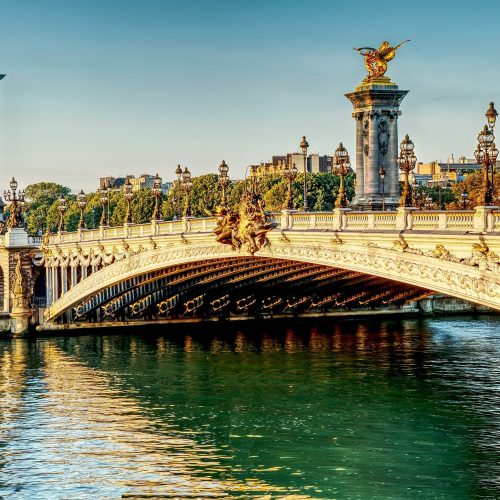
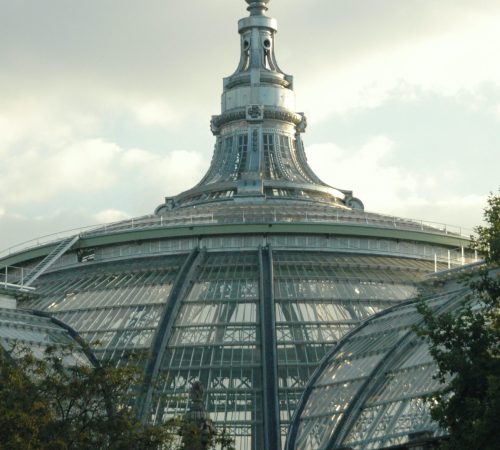
The Grand Palais, also known as Le Grand Palais des Champs-Élysées
It is a historic exhibition hall and museum complex located in the 8th arrondissement of Paris. The building was constructed for the 1900 World’s Fair and is known for its Beaux-Arts architecture and grandiose design.
The Petit Palais
It is a museum located in the 8th arrondissement of Paris. It was built for the 1900 World’s Fair and is now home to a collection of art and artifacts from antiquity through the early 20th century.
The building is an architectural masterpiece, featuring a combination of Art Nouveau and Beaux-Arts styles. The exterior is adorned with sculptures, reliefs, and intricate decorations. The interior features a beautiful central courtyard and a soaring glass roof.
The museum’s collection includes works by famous artists such as Rembrandt, Monet, and Cézanne. It also houses ancient sculptures, medieval art, and decorative objects from various periods. The Petit Palais is also known for its collection of Art Nouveau and Art Deco objects, including furniture, ceramics, and glassware.
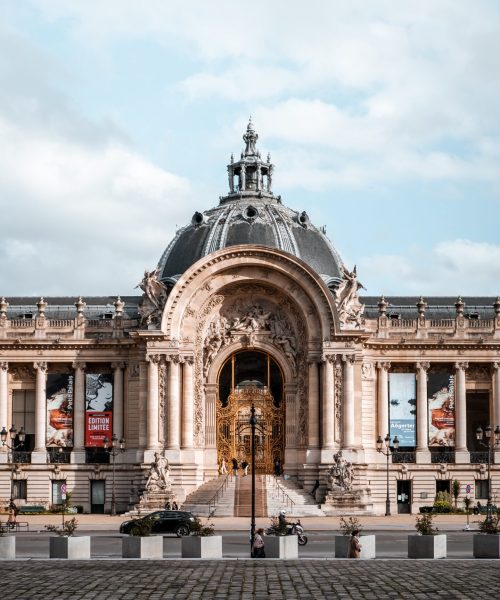
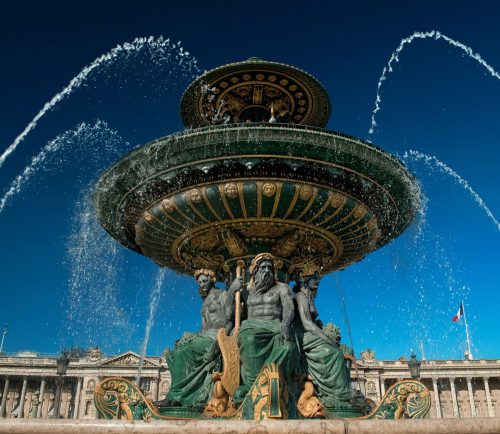
The Place de la Concorde
It is one of the most famous public squares in Paris, located at the eastern end of the Champs-Élysées in the 8th arrondissement of the city. It is known for its impressive size, beautiful fountains, and historic monuments.
In the center stands the Luxor Obelisk, the Fontaines de la Concorde, and the Hôtel de Crillon. The Obelisk was gifted by Egypt to France in the 19th century. The hotel is a luxurious hotel where VIP visitors to France stay.
The hop-on hop-off bus tour is ideal for getting around. Click here for information.
The Musée d’Orsay
A famous museum located on the Left Bank of the Seine River in Paris. The museum is housed in a former railway station, the Gare d’Orsay, which was built in 1900 and converted into a museum in the 1980s.
The Musée d’Orsay is renowned for its extensive collection of Impressionist and Post-Impressionist art, featuring works by famous artists such as Monet, Van Gogh, Degas, Cézanne, and Renoir. The museum houses Van Gogh’s “Starry Night over the Rhône,” Degas’ “Little Dancer Aged Fourteen,” and Monet’s “Water Lilies.”
For one day ticket with reserved access click here.
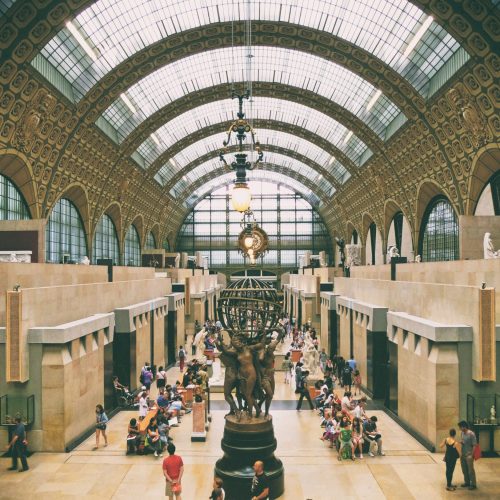
DAY 4
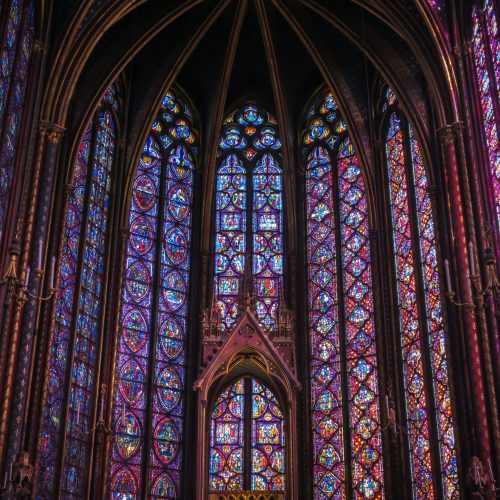
Sainte-Chapelle
It is a Gothic-style chapel in the heart of Paris, on the Île de la Cité island in the 1st arrondissement. The chapel was built in the mid-13th century by King Louis IX, who intended it to house his collection of religious relics, including the Crown of Thorns.
The Sainte-Chapelle is renowned for its stunning stained glass windows, which cover nearly 600 square meters and depict scenes from the Bible and the lives of the saints. The upper level has amazing glasswork.
For tickets click here.
The Louvre Museum
One of the world’s most famous and visited art museums, in the heart of Paris. It is housed in a former royal palace, the Louvre Palace, which was built in the 12th century and expanded over the centuries.
It is home to some of the most famous masterpieces in the world, including the Mona Lisa by Leonardo da Vinci, the Winged Victory of Samothrace, and the Venus de Milo.
House exhibits house of the Egyptian Antiquities collection, the Islamic Art collection, and the French Crown Jewels.
For skip the line tickets and information click here.
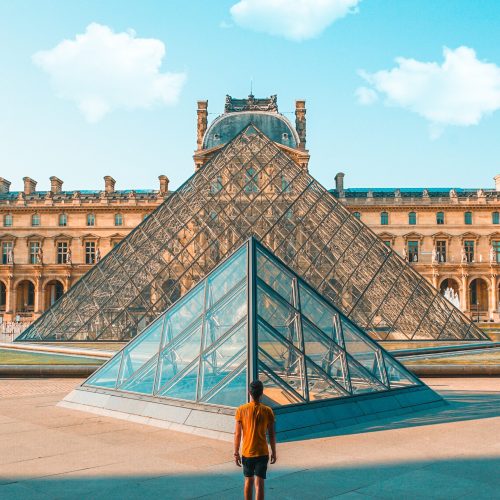
The Museum of Decorative Arts, also known as the Musée des Arts Décoratif
It is a museum located in the Palais du Louvre. It is dedicated to the decorative arts, including furniture, textiles, ceramics, glassware, jewelry, and other decorative objects.
The museum’s collection includes over 150,000 objects, spanning the Middle Ages to the present day. It features pieces from many different cultures, including French, European, Asian, and Islamic art. Some of the most notable pieces in the collection include Napoleonic furniture, Art Nouveau glassware, and contemporary jewelry.
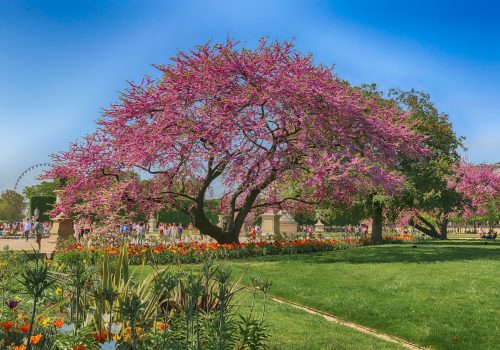
The Jardin des Tuileries
A public garden located in the 1st arrondissement of Paris, adjacent to the Louvre Museum. Created in the 16th century by Catherine de Medici as the garden of the Tuileries Palace, which no longer exists.
It is a beautiful relaxing garden. I always end up there after long days, sitting on a backward-leaning chair and enjoying the calm and view.
DAY 5
The Seine River Walk
A walk along its banks is a popular activity. The Seine Riverwalk, also known as the Promenade des Berges de la Seine, is a pedestrian path that runs along the Left Bank of the river from the Eiffel Tower to the Orsay Museum, and along the Right Bank from the Tuileries Garden to the Bastille. It offers stunning views of Paris architecture along the way.
The Montparnasse Cemetery
It is a famous cemetery in the Montparnasse area of Paris, France. It was established in the early 19th century and is the final resting place of many notable figures, including writers, artists, politicians, and scientists, such as Jean-Paul Sartre and Charles de Gaulle.
The Paris Catacombs
Consist of a series of underground tunnels and chambers located beneath the streets of the city. They were created in the late 18th century as a solution to solve the problem of overflowing cemeteries in Paris. It holds the remains of over six million people.
The Paris Catacombs are a unique attraction, offering a glimpse into the city’s history and how people have dealt with death and the afterlife. You should be aware that it is dark, humid, and morbid.
Click here for skip-the-line tickets.
The Latin Quarter
A historic neighborhood located on the Left Bank of the Seine River. It is known for its lively atmosphere, bohemian vibe, and rich cultural heritage. It is home to Sorbonne University.
It is a lively neighborhood with alleys full of international cuisine-type restaurants. It is a great place to have dinner.
The Hop-on hop-off tour bus will take you there. Click for information.
If you prefer a private or group walking tour click here.
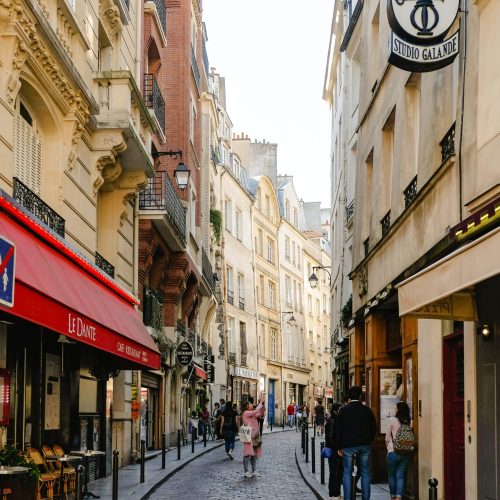
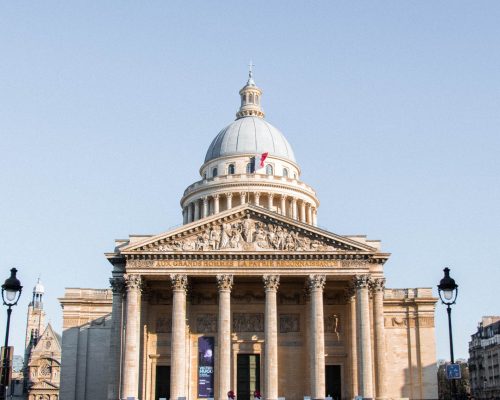
The Panthéon
A neoclassical building located in the Latin Quarter. It was built as a church in the 18th century and later converted into a secular mausoleum for famous French figures such as Voltaire, Jean-Jacques Rousseau, Victor Hugo, and Emile Zola.
For admission and self guided tour click here.
DAY 6
The Luxembourg Gardens, or Jardin du Luxembourg in French
A beautiful public park located in the heart of Paris. The park covers over 60 acres and is known for its meticulously maintained gardens, stunning fountains, and peaceful atmosphere.
The gardens were created in the 17th century for Marie de Medici, the widow of King Henry IV. It contains beautiful sculptures and fountains.
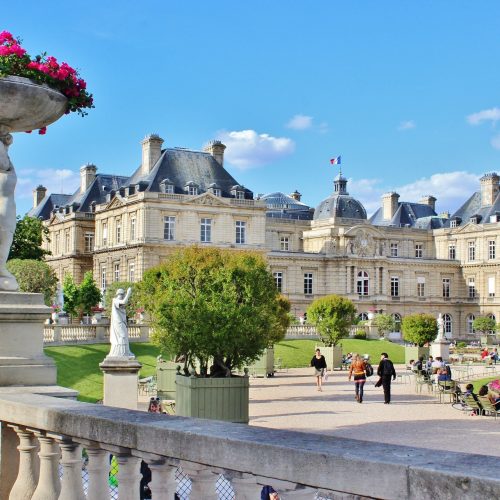
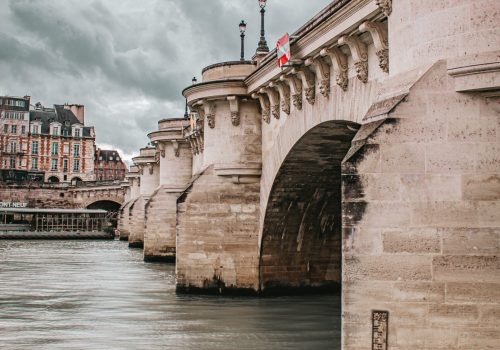
Pont Neuf
A historic bridge crossing the Seine River. It is the oldest surviving bridge in Paris, completed in 1607. Walking across the bridge, you will see stunning views of the river and the area’s architecture.
Notre Dame de Paris, also known as simply Notre Dame
The famous cathedral is located in the center of the city. It is considered a masterpiece of French medieval architecture. Construction began in 1163 and took over 200 years to complete.
This is a must-see site despite the 2019 fire that destroyed the spire.
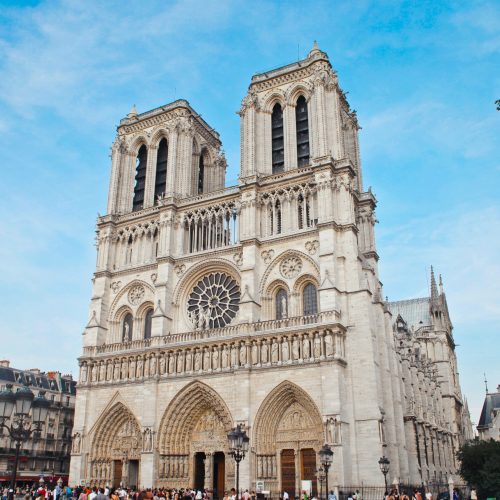
The Picasso Museum
It s a museum dedicated to the famous Spanish artist Pablo Picasso. It is located in the Marais district of Paris, in the Hôtel Salé, a grand 17th-century mansion, that has been carefully restored to house the museum’s extensive collection.
The museum contains more than 5,000 works of art, including paintings, sculptures, drawings, prints, and ceramics, covering the full range of Picasso’s artistic career.
For tickets to the museum click here.
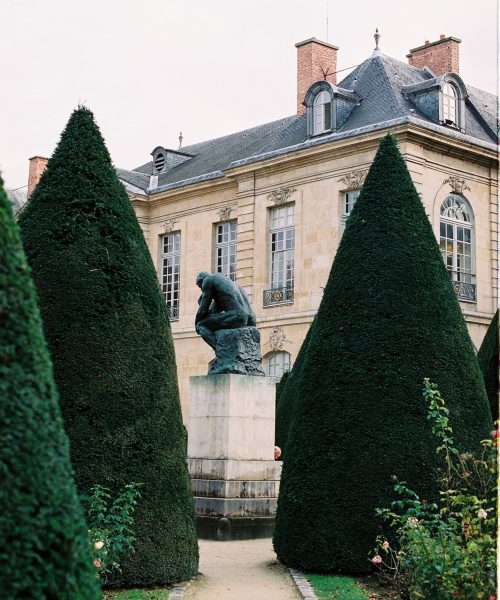
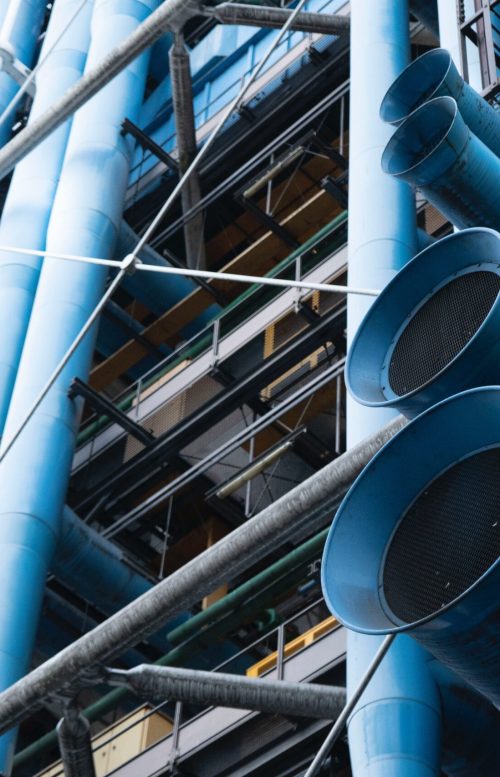
The Centre Pompidou, also known as the Pompidou Centre
It is a cultural center in the heart of Paris. It is named after former French President Georges Pompidou, who initiated the project in the 1970s to promote contemporary art and culture.
The building is famous for its unique design, which features exposed pipes, ducts, and other mechanical systems on the exterior of the building, giving it a distinctive, industrial look. The center houses several cultural institutions, including the Musée National d’Art Moderne (National Museum of Modern Art), the Bibliothèque Publique d’Information (Public Information Library), and the IRCAM (Institute for Research and Coordination in Acoustics/Music).
For tickects click here.
DAY 7
The Palace of Versailles
A historic chateau located in Versailles, France, about 20 kilometers southwest of Paris. It was built as a hunting lodge for King Louis XIII in 1623 and later expanded and transformed into a grand palace by his son, Louis XIV, in the late 17th century. The palace features numerous rooms and galleries showcasing exquisite artwork, furniture, and architecture. Beautifully landscaped gardens with fountains, sculptures, and other decorative elements.
Access to Versailles and gardens including transportation click here.
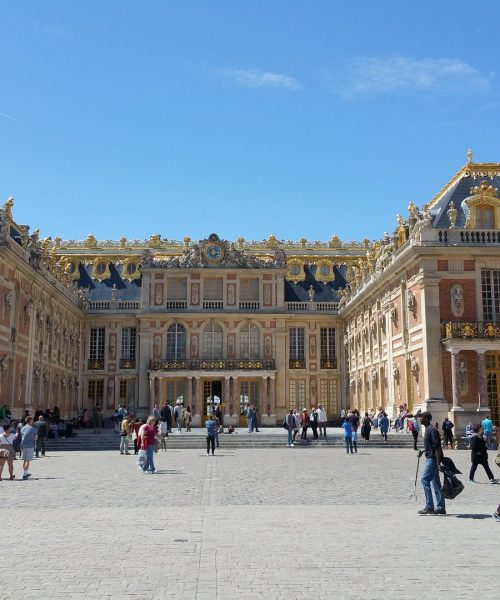
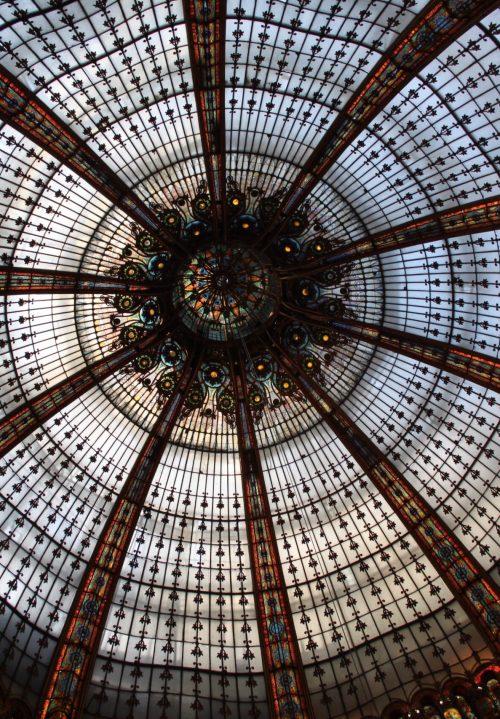
Galeries Lafayette
This is a high-end department store chain. The flagship store is situated in the 9th arrondissement, on Boulevard Haussmann, the most famous shopping destination in Paris.
The store is known for its beautiful Art Nouveau architecture and stunning glass domed ceiling, was designed by Gustave Eiffel, the same architect who designed the Eiffel Tower. The store offers an extensive range of high-end fashion brands, luxury accessories, cosmetics, and homewares, catering to the tastes of the most discerning shoppers.
The Grevin Wax Museum
A wax museum, one of the city’s most popular tourist attractions. The museum was founded in 1882 by journalist Arthur Meyer, and its name comes from its first artistic director, Alfred Grevin.
The museum
is home to more than 450 wax figures of famous people from history, art, politics, and entertainment, including French and international celebrities. The wax figures are incredibly lifelike. Visitors can take photos and get up close and personal with them.
For tickets click here.
There are a variety of tour packages, tickets and activities. Check out “GetYourGuide”.
Read my blog on Travel Insurance
Disclosure: Please note that some links on this website are affliate links. At no cost to you, I receive commission if you make a purchase. I only recommend companies that I research and would use.








